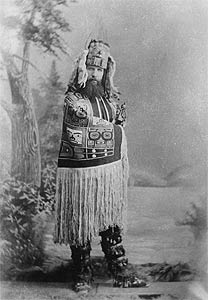| The
Land
Colonial
Settlers
Community
of Villages Pre-emptions Agriculture Timelines Image
Gallery
| |
In 1856, Thomas Crosby (1840-1914), with his parents, left his home in England and came to live in Ontario. His desire to minister to native people led him to the west coast of Canada. He arrived in Victoria in 1862 and in 1863 went to Nanaimo to take charge of an Indian school. He
traveled up and down the coast and into the interior, preaching in both native and English languages. He paddled a dugout canoe from Nanaimo to the mainland and
traveled by pony and on foot for many miles. In 1869, he conducted a camp meeting on the banks of the Atchelitz Creek and from his works a church was built on land donated by Charles Evans and
A.C. Wells.
In 1873, Crosby visited Ontario for a short while, then returned west, going north to Port Simpson, near Prince Rupert where he ministered for 25 years. His mission work on the coast took him north to Alaska, east to Hazelton, west to the Queen Charlotte Islands and south to Queen Charlotte Sound. Friends of his mission work provided him with a little steamboat named "Glad Tidings". He
traveled many miles in the steamer, ministering as far south as Victoria. The "Glad Tidings" was wrecked while in service and was replaced by a new missionary boat named in his
honor the "Thomas Crosby".
Thomas Crosby married Emma Douse in 1874. They had six children; three of whom died at a young age.
Reverend Crosby returned to Chilliwack in 1899 and retired to Vancouver in 1907.
|
|

P59 - Formal portrait of Rev. Thomas Crosby in
a Chilkat blanket.
|

